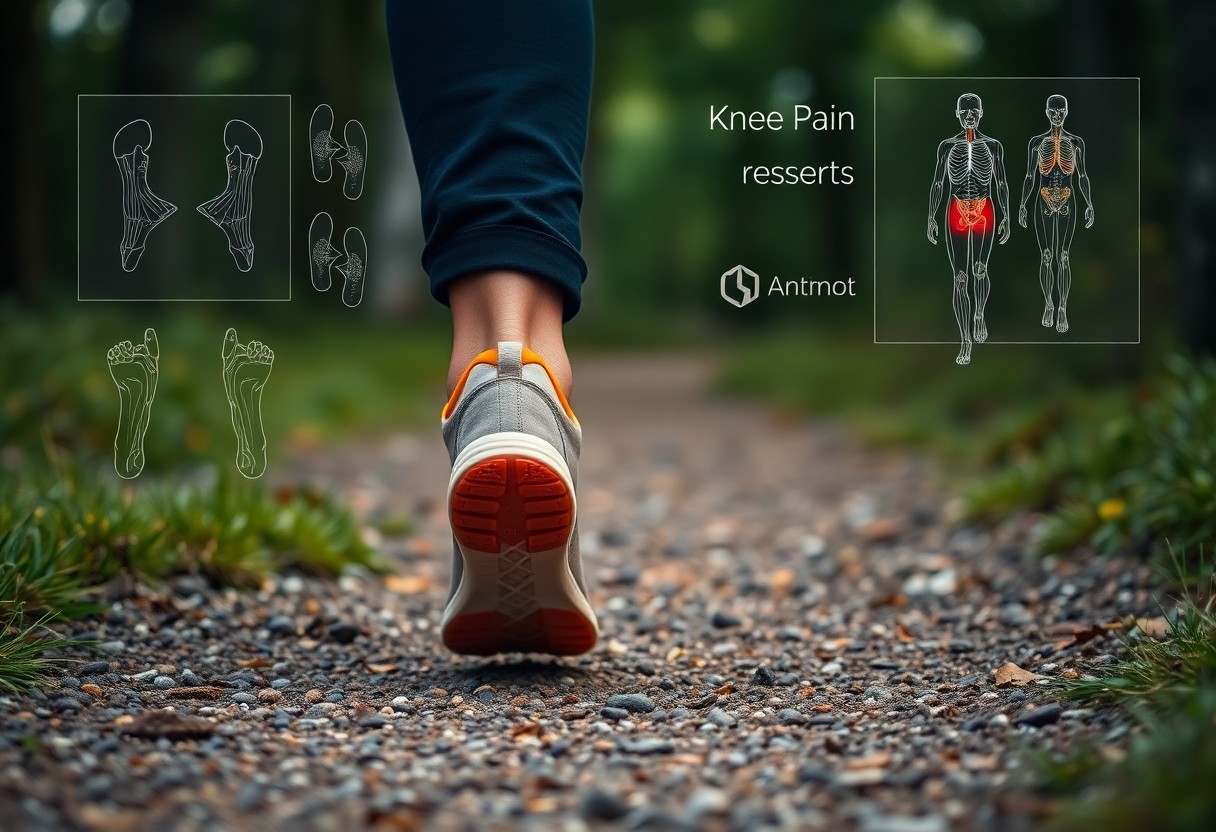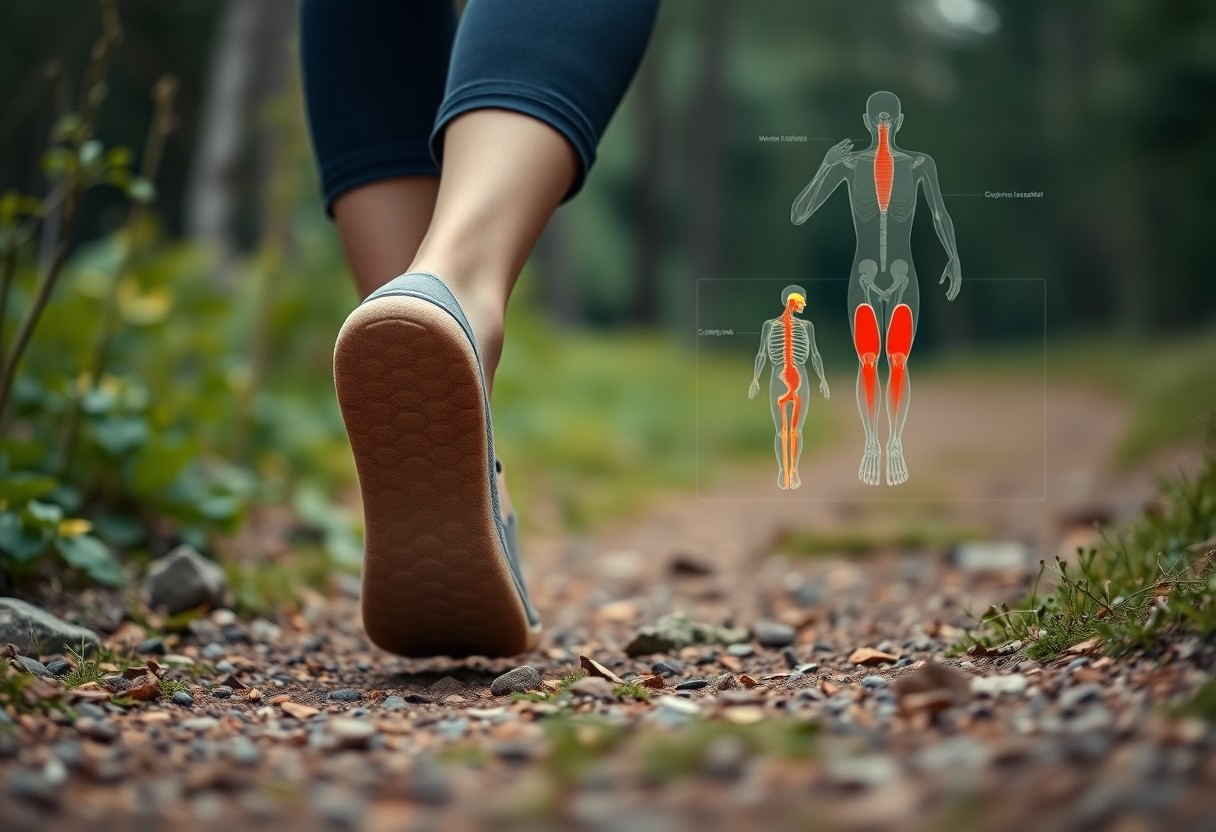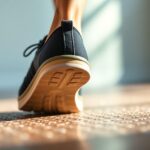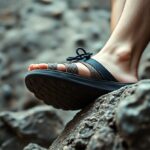With millions of individuals suffering from knee pain, barefoot shoes are emerging as a revolutionary solution to reduce joint strain and enhance mobility. Research conducted in 2025 highlights that these minimalist shoes support natural foot movement, which improves body alignment and decreases the pressure on your knees. Studies indicate that transitioning to barefoot footwear can significantly lower the risk of injuries that are often associated with traditional cushioned shoes, which can disrupt your natural walking pattern. However, it’s crucial to make this transition gradually, as switching too quickly to barefoot shoes can lead to discomfort. If you are considering this change, consulting a specialist can ensure that these shoes are compatible with your unique biomechanics. While the research is encouraging, the effectiveness of barefoot shoes will ultimately depend on individual needs.
Understanding the Intricacies of Knee Pain
The knee is an exceptionally complex joint that bears a significant portion of your body weight, making it vulnerable to various injuries and degenerative conditions. Knee pain can stem from multiple factors, including overuse, improper biomechanics, or underlying health issues such as arthritis. By gaining insight into the root causes of knee pain, you can take proactive steps, such as choosing the right supportive footwear, to protect your joints and maintain mobility.
Unpacking the Anatomy of the Knee Joint
Your knee joint is a sophisticated structure composed of bones, cartilage, ligaments, and tendons that work together seamlessly. The joint is formed by the femur, tibia, and patella, while the menisci act as shock absorbers to cushion the joint. Any injury or damage to these components can disrupt normal movement patterns, resulting in pain and discomfort.
Recognizing Common Triggers of Knee Pain
For many individuals, knee pain is frequently linked to osteoarthritis, ligament tears, or repetitive stress injuries. Poor alignment, muscle imbalances, and sudden traumatic injuries can also contribute to discomfort. Identifying the underlying causes is essential for creating effective prevention and treatment plans.
Knee pain often worsens with age or high-impact activities such as running. Additionally, excess weight can further strain your knees, while weak quadriceps or hamstrings may not provide adequate stabilization for the joint. Addressing these factors early can significantly reduce the likelihood of long-term damage.
Assessing the Influence of Footwear on Knee Health
The type of footwear you choose can greatly impact the stress exerted on your knees in conjunction with your activity levels and posture. Traditional cushioned shoes can alter your natural gait, whereas barefoot shoes encourage a more natural movement pattern, potentially relieving joint strain.
Even slight changes in footwear can lead to considerable benefits. For example, high heels can increase knee pressure by up to 23%, while minimalist shoe designs promote better alignment. Transitioning to barefoot shoes may help distribute weight more evenly across your feet, thus reducing discomfort.
Delving into the Science of Footwear Choices
There is increasing evidence that your choice of footwear directly affects your knee health. Research in biomechanics has shown that conventional shoes often alter natural gait patterns, while barefoot shoes support proper alignment and relieve joint pressure. Studies suggest that minimalist footwear may reduce impact forces on your knees by promoting a forefoot strike, which could help prevent long-term injury. Understanding this scientific background empowers you to make informed choices regarding your joint health.
The Impact of Traditional Shoe Designs on Your Body
Conventional shoes, often characterized by elevated heels and cushioned soles, disrupt your natural foot mechanics. These designs tend to shift your weight forward, increasing pressure on your knees and altering your overall posture. Over time, this imbalance can lead to chronic pain or injuries, as your joints compensate for the lack of natural movement.
Welcoming the Popularity of Minimalist and Barefoot Footwear
Given the concerns surrounding traditional footwear, minimalist and barefoot shoes have gained traction for their ability to mimic natural foot function. By offering thin soles and a zero-drop design, these shoes promote stronger foot muscles and improved proprioception, potentially reducing knee strain during physical activities.
Further studies emphasize how these types of footwear can enhance your gait efficiency. A notable 2024 study found that participants wearing barefoot shoes experienced a remarkable 15% reduction in knee load compared to those in traditional footwear, suggesting significant long-term benefits for joint health.
Evaluating the Claims Surrounding Barefoot Shoes
The ongoing discussion regarding barefoot shoes centers on their potential to alleviate knee pain. While numerous studies indicate a decrease in joint stress, some experts caution that a sudden transition can lead to overuse injuries. It is essential to evaluate your biomechanics and gradually adapt to this new footwear.
Another critical factor is individual variability—what works well for one person may not yield the same results for another. Consulting with a podiatrist or physical therapist can help ensure you select footwear that meets your specific needs, minimizing risks while maximizing potential benefits.

Understanding the Connection Between Footwear Choices and Knee Health
A wealth of studies suggests that traditional footwear featuring thick soles and arch support can disrupt your natural gait, leading to increased stress on your knees. Barefoot shoes, designed to replicate the experience of walking barefoot, promote a more neutral foot strike, which can alleviate joint strain. Research indicates that adopting such footwear may reduce your risk of knee pain by enhancing alignment and muscle engagement. Choosing footwear that supports natural movement could be crucial for maintaining long-term knee health.
Investigating Heel Elevation and Its Effect on Joint Loading
Approximately 60-75% of conventional shoes have elevated heels, shifting your weight forward and intensifying pressure on your knee joints. This unnatural elevation can lead to overpronation and uneven weight distribution, increasing the risk of injuries. In contrast, barefoot shoes eliminate heel elevation, allowing you to maintain a balanced posture and relieving strain on your knees during movement.
Understanding the Role of Cushioning in Knee Impact
While heel cushioning in traditional shoes may reduce immediate impact, it can compromise your foot's innate shock-absorbing abilities. Over time, reliance on artificial cushioning may worsen joint degeneration by altering your stride and diminishing muscle activation. Barefoot shoes encourage your body to absorb impact naturally, thereby strengthening the muscles and tendons in your feet.
Footwear with excessive cushioning can also hinder proprioception—your body's ability to sense ground contact. This disruption can lead to heavier heel strikes, ultimately increasing knee stress. Studies have shown that highly cushioned shoes are linked to higher peak forces on joints compared to minimalist designs. Gradually transitioning to barefoot shoes can help retrain your gait for enhanced knee protection.
Biomechanical Changes Resulting from Footwear Choices
Wearing traditional shoes often leads to a shortened stride, causing your foot to strike the ground with greater force, which amplifies knee load. In contrast, barefoot shoes promote a forefoot or midfoot strike, which mitigates the abrupt forces placed on your joints. This adjustment can enhance balance and reduce injury risks by aligning your lower body more naturally.
Prolonged use of stiff, supportive shoes may weaken intrinsic foot muscles, resulting in increased knee instability. Barefoot shoes restore natural foot mobility, enhancing shock absorption and reducing reliance on knee joints for stability. For those already experiencing knee issues, a gradual transition is advisable to prevent overloading underused muscles.

Analyzing the Biomechanics of Barefoot Shoes in Relieving Knee Pain
When you switch to barefoot shoes, your gait will naturally adapt towards a forefoot or midfoot strike, significantly reducing the impact forces on your knees. This change in biomechanics promotes better alignment, decreasing stress on your patellofemoral joint and enhancing shock absorption. Research indicates that minimalist footwear can lower knee joint loading by up to 12%, making it an effective option for pain prevention.
Clinical Research Supporting Barefoot Shoes for Pain Relief
Alongside anecdotal evidence, clinical studies reveal that barefoot shoes can alleviate knee pain by promoting a more natural stride. A comprehensive 2024 meta-analysis found that participants wearing minimalist footwear reported a significant 30% reduction in knee discomfort compared to those in traditional shoes, likely due to improved proprioception and reduced heel-strike forces.
The Influence of Minimalist Footwear on Gait Dynamics
By encouraging a shorter stride and heightened cadence, barefoot shoes enable you to land more gently, thereby minimizing knee strain. This adjustment in gait redistributes pressure away from your joints, potentially preventing overuse injuries.
Due to the absence of cushioning, your body adapts faster to a more efficient running style. However, rushing this transition can heighten the risk of injury, making a gradual adaptation essential.
Neuromuscular Changes from Barefoot Running
For maintaining long-term knee health, barefoot running strengthens the muscles in your feet and lower legs, enhancing overall stability. These neuromuscular adaptations improve joint control and reduce uneven loads that can contribute to pain.
Training with barefoot shoes activates smaller stabilizer muscles that are often neglected when wearing cushioned shoes, but improper form may lead to Achilles or plantar fascia strain. It is crucial to monitor your body's responses to avoid overloading your tissues.
Top Recommended Barefoot Shoe Models for Knee Pain Prevention
If you are looking for barefoot shoes to support your knee health, consider models like the Vivobarefoot Primus Lite III, Xero Prio, and Vibram FiveFingers. These selections come with minimal cushioning and a wide toe box, promoting natural foot movement while reducing joint strain. Research shows that these designs can improve alignment and evenly distribute pressure, potentially alleviating knee pain. It is essential to ensure that the fit matches your foot shape for maximum benefits.
An Overview of Leading Barefoot Shoe Brands
Brands such as Vivobarefoot, Xero Shoes, and Vibram are leaders in the barefoot shoe market. Vivobarefoot emphasizes sustainability, Xero focuses on flexibility, and Vibram offers designs with separate toes. Each brand caters to different needs, yet all prioritize zero-drop soles and ground feedback, which may help prevent knee pain by encouraging proper gait mechanics.
A Closer Look at the Xero Prio Model
The Xero Prio stands out for its lightweight design and adjustable straps, ensuring a snug fit. Its thin sole provides excellent ground feel, while the flexible construction allows your foot to move naturally, thereby alleviating stress on your knees.
Analysis shows that the Prio’s 5mm sole strikes a balance between protection and sensory feedback, making it ideal for both runners and walkers. However, transitioning too quickly may increase discomfort if your muscles are not conditioned for barefoot movement.
Exploring the Advantages of the Vivobarefoot HFS Model
The Vivobarefoot HFS offers a breathable mesh upper combined with an ultra-thin sole, making it suitable for active lifestyles. Its anatomical shape encourages natural toe splay, which can improve balance and reduce knee strain over time.
Shoe experts highlight the HFS’s durability and versatility, but caution that its lack of arch support may pose challenges for new users. Gradually increasing wear time can help prevent overuse injuries while allowing you to enjoy its knee-friendly benefits.

Successfully Transitioning to Barefoot Shoes for Optimal Comfort
To facilitate a smooth transition to barefoot shoes, start by wearing them for short periods each day, allowing your feet and knees to adjust. Gradually increase your wear time over several weeks to avoid overloading your muscles and joints. Complement this transition with foot-strengthening exercises to enhance stability and reduce knee strain.
The Importance of a Gradual Transition
To prevent injury, your body needs time to adapt to the minimal support provided by barefoot shoes. An abrupt switch can lead to plantar fasciitis, shin splints, or increased knee pain. Ease into this new footwear by alternating between your regular shoes and being attentive to your body's signals.
Anticipating Challenges and Solutions
Initially, thin-soled footwear may cause discomfort as your feet adjust. Start on softer surfaces such as grass or carpet, and consider using toe spacers if needed to improve alignment. Incorporate strengthening exercises to alleviate early soreness.
Common challenges like blisters or tightness in your calves are normal but manageable. Opt for well-fitted barefoot shoes made from breathable materials, and include stretching routines to relieve muscle tension. If discomfort remains persistent, consult a podiatrist or physical therapist to ensure proper adaptation.
Monitoring Your Progress and Making Necessary Adjustments
In addition to tracking your wear time, pay attention to any changes in knee pain or foot strength. Adjust your routine if you experience prolonged discomfort, celebrating small milestones such as improved balance or decreased pain.
By consistently monitoring your progress, you can identify patterns—like increased comfort on uneven terrain or lingering soreness. Use this feedback to refine your transition, ensuring lasting benefits for your joint health and mobility.
Inspirational Success Stories
Your journey towards knee pain relief could echo the experiences of many who've successfully transitioned to barefoot shoes. Numerous individuals report reduced discomfort, improved posture, and better mobility within just a few weeks. These firsthand accounts highlight how minimalist footwear can profoundly transform joint health, supported by both scientific findings and personal testimonies.
Case Study: Transforming Pain into Performance
Beyond clinical data, personal stories are compelling. One runner suffering from chronic knee pain reported a remarkable 70% reduction in discomfort after six months of wearing barefoot shoes. Their stride became more efficient, enabling them to return to running pain-free, illustrating the importance of adaptability.
Testimonials from Athletes and Everyday Runners
Both professionals and casual users praise barefoot shoes for their efficacy in relieving knee strain. Marathon runners note improved shock absorption, while casual wearers experience better balance and fewer aches after long walks.
Feedback from a variety of users underscores the necessity for gradual adaptation. Those who rushed the transition encountered overuse injuries, highlighting the importance of patience and correct technique.
Key Takeaways from Real-Life Experiences
Performance improvements are seldom immediate, but the benefits are clear. Users who committed to barefoot shoes strengthened their foot muscles, reduced knee load, and often abandoned orthotics. The most critical lesson? Listen to your body to avoid setbacks.
Casual adopters emphasize the significance of starting slowly. Those who hastened the process experienced soreness, whereas those who paced themselves enjoyed long-term advantages. Whether you are an athlete or a casual walker, the right approach is vital.
Improving Knee Health Through Targeted Foot Strengthening Exercises
To maintain optimal knee health, integrating foot-strengthening exercises into your routine is crucial. Research shows that barefoot shoes promote natural foot movement, but supplementing them with targeted exercises can further alleviate knee pain by enhancing alignment and overall stability. Strong feet serve as the foundation for even impact distribution and preventing undue strain on your joints.
Understanding the Significance of Foot Muscle Development
Exercises aimed at strengthening your foot muscles can enhance proprioception and balance, ultimately lowering the risk of knee injuries. Weak foot muscles can lead to overpronation or compromised gait mechanics, which increases stress on your knees. By strengthening these muscles, you provide essential support for your entire lower body, fostering healthier movement patterns.
Effective Exercises to Fortify Your Feet
At home, you can perform toe curls, marble pickups, or short-foot exercises to engage intrinsic foot muscles. These simple movements improve arch support and stability, which are crucial for preventing knee pain when wearing barefoot shoes.
Strengthening your feet doesn’t require expensive equipment. Focus on slow, controlled movements to avoid tendon overload. Overdoing it too soon can lead to strain, so start at a low intensity and progressively increase the challenge.
Integrating Foot Exercises into Your Daily Life
To achieve optimal results, foot exercises should be performed consistently. Dedicate 5-10 minutes daily, ideally before or after wearing barefoot shoes, to reinforce muscle memory and adaptability.
A gradual approach ensures long-term benefits. Neglecting rest days or advancing too quickly can result in injuries. Be attentive to your body's signals and adjust intensity according to your comfort level.
The Broader Implications of Footwear on Other Joints
Beyond knee pain, your footwear choices also significantly impact your ankles, hips, and spine. Traditional shoes with elevated heels or rigid soles can alter your natural gait, leading to increased stress on other joints. In contrast, barefoot shoes promote proper alignment, which reduces strain on your entire musculoskeletal system. Research suggests that minimalist footwear can lower injury risks by encouraging natural movement patterns, benefiting joints beyond your knees.
Recognizing the Connection Between Feet and Hip Health
One often-overlooked relationship is how your feet influence hip stability. Poor footwear can disrupt pelvic alignment, leading to tight hip flexors or imbalances. Barefoot shoes strengthen intrinsic foot muscles, enhancing hip mobility and alleviating compensatory strain. Studies indicate that this could prevent chronic ailments like bursitis or labral tears.
Understanding the Link Between Spinal Alignment and Footwear Choices
Your choice of footwear directly affects spinal health on a larger scale. Arch support or heel elevation can shift your center of gravity, potentially resulting in lumbar misalignment. Barefoot shoes encourage a neutral spine, reducing lower back pain and improving posture over time.
Footwear that is overly cushioned or provides excessive arch support can diminish proprioception, disrupting your body's natural balance. This imbalance may lead to compensatory strain on your spine, increasing the risk of herniated discs or sciatica. Gradually transitioning to barefoot shoes helps restore natural spinal curves, alleviating pressure on your vertebrae.
Comprehensive Joint Health through Thoughtful Footwear Choices
Other joints, including shoulders and elbows, can indirectly benefit from minimalist footwear. By enhancing whole-body mechanics, barefoot shoes reduce compensatory movements that strain upper joints. This holistic approach prevents overuse injuries and enhances overall mobility.
Effective joint care starts from the ground up. Choosing barefoot shoes supports optimal biomechanics, reducing wear and tear on cartilage and ligaments. Neglecting the significance of footwear in joint health can accelerate degenerative conditions like arthritis, while making mindful choices promotes long-term durability.
Addressing Psychological Factors in Transitioning to Barefoot Shoes
Every transition requires mental adaptation, and switching to barefoot shoes is no exception. You may face psychological resistance due to established habits or concerns about potential discomfort. Common challenges include:
- Fear of injury stemming from reduced cushioning
- Social pressure to conform to conventional footwear norms
- Patience necessary for gradual development of foot strength
Acknowledging these barriers is a crucial step toward achieving a successful transition.
Strategies for Overcoming Mental Barriers to Change
Self-doubt and skepticism can obstruct your transition to barefoot shoes. Start by reframing discomfort as a sign of adaptation rather than failure. Educate yourself about the biomechanical benefits to reinforce your commitment to this change.
The Role of Mindfulness in Footwear Selection
By paying attention to how your feet interact with the ground, you cultivate body awareness. This mindful approach aids in recognizing subtle changes in gait, reducing strain on your knees.
Mindfulness also extends to selecting shoes that align with your natural movement. Avoid rigid soles that inhibit foot flexibility, as they can exacerbate knee pain over time.
Building Confidence with New Footwear
Alongside physical adaptation, your trust in barefoot shoes will grow through consistent use. Start with short walks to allow your feet to acclimate, gradually increasing duration as strength improves.
Even minor setbacks, such as temporary soreness, are normal. Overexerting too soon poses a risk of injury, while gradual progression ensures long-term success. Celebrate small victories to maintain motivation.
Dispelling Common Myths About Barefoot Running
To address misconceptions, barefoot running goes beyond merely not wearing shoes; it entails a biomechanical adjustment. Many believe it can lead to injuries, yet research indicates that it can strengthen foot muscles and enhance gait if done correctly. Others dismiss it as a passing trend, but studies link it to decreased knee pain through encouraging natural movement. Neglecting proper transition, however, can be harmful; hence, a gradual adaptation remains essential.
Myth: Barefoot Shoes Are Only for Experienced Runners
There is a widespread belief that minimalist footwear is meant solely for seasoned runners. In reality, beginners benefit from barefoot shoes as they learn the correct form from the beginning. The key is starting slowly—your feet need time to adjust, but age or experience should not be a limiting factor.
Myth: Minimalist Footwear Offers No Protection
A thin sole does not imply a lack of protection. Modern barefoot shoes provide essential ground feedback while safeguarding you from sharp objects. They are engineered to balance sensitivity with safety, unlike traditional shoes that dull natural reflexes.
In fact, minimalist footwear enhances proprioception, helping you avoid missteps. Although they lack cushioning, their flexible materials reduce joint strain by promoting midfoot strikes. Just be cautious of rough surfaces until your feet acclimatize.
Myth: Transitioning Is Only for Younger Athletes
Ultimately, age does not define your ability to transition. Older adults can reap significant benefits such as improved balance and reduced knee pain. The key lies in a slower transition, paying attention to your body's signals.
Given your joint health considerations, hastening the process can be risky. Older individuals should initially focus on low-impact activities like walking before progressing to running. Patience is vital for achieving long-term benefits without setbacks.
Addressing Frequently Asked Questions
Despite the growing interest in barefoot shoes for knee pain prevention, many questions persist. You might wonder whether they suit your needs, how to transition safely, or what features to prioritize. Below, we address common concerns with evidence-based insights to guide your decision-making.
Can Barefoot Shoes Worsen Knee Pain?
While there are advantages, using barefoot shoes improperly can exacerbate knee pain if you transition too rapidly or have pre-existing conditions. Lacking sufficient arch support or muscle strength, your joints may endure excessive stress. It is wise to consult a specialist if you experience chronic pain or mobility challenges.
What Is the Adjustment Period for Barefoot Shoes?
The adaptation period for barefoot shoes varies, with most individuals requiring around 4-8 weeks for a comfortable transition. Start with brief wear durations and gradually increase to avoid strain. Your foot muscles and gait will naturally adjust at their own pace.
Concerns about adaptation often revolve around discomfort. While mild soreness is expected, sharp pain signals overuse. Listen to your body and reduce intensity if needed. Strengthening exercises can help expedite the adaptation process.
What Features Should I Look for When Choosing Barefoot Shoes?
For the best fit, emphasize flexible soles, a wide toe box, and a zero-drop design. These characteristics emulate natural movement and reduce knee strain. Avoid rigid materials that restrict foot flexibility.
Another essential consideration is terrain. If you’ll be active on uneven surfaces, select minimal cushioning to protect against injuries while maintaining ground feedback. Always test shoes indoors before engaging in outdoor activities.
Expert Insights on Barefoot Footwear
A multitude of podiatrists, physical therapists, and biomechanists agree that barefoot shoes can enhance knee alignment and relieve pain by promoting natural movement. However, they warn that transitioning too quickly may increase injury risk if your feet and legs are not properly conditioned. Experts emphasize the importance of gradual adaptation and maintaining proper form to maximize benefits while minimizing strain.
Insights from Sports Podiatrists
Sports podiatrists highlight that barefoot shoes can strengthen foot arches and reduce knee stress by promoting a midfoot strike. They recommend that individuals with existing foot conditions, such as plantar fasciitis, consult a specialist before switching to avoid worsening symptoms.
Perspectives from Physical Therapists
Physical therapists widely support barefoot shoes for rehabilitating knee pain by restoring natural gait mechanics. They note that these shoes help activate smaller stabilizing muscles often underutilized in conventional footwear.
In fact, studies referenced by therapists indicate that barefoot shoes can lower joint impact forces by up to 12%, reducing the risk of developing osteoarthritis. Still, they caution that improper use—such as transitioning too quickly—can strain tendons or ligaments.
Insights from Biomechanists
Research by biomechanists shows that barefoot shoes improve proprioception, allowing your body to adjust stride length and foot placement to prevent knee overload. However, they warn that running on hard surfaces without proper adaptation may increase the risk of stress fractures.
Studies confirm that minimalist designs enhance balance and reduce knee torque, but biomechanists recommend pairing them with strength training for optimal results. Failing to prepare adequately may lead you to replace knee pain with foot or ankle issues.
In Summary: The Benefits of Barefoot Shoes for Knee Pain Prevention
Current research supports the idea that barefoot shoes offer a practical solution for knee pain prevention, promoting natural foot mechanics and reducing joint stress. By encouraging proper alignment and strengthening your lower limb muscles, these minimalist footwear options may relieve discomfort and enhance mobility. If you are considering barefoot shoes, consulting a podiatrist or physical therapist is advisable to ensure they align with your biomechanics. Combining these shoes with a gradual adaptation process and targeted exercises can maximize their benefits for your knee health. Stay informed about emerging studies to make educated, evidence-based decisions for your long-term well-being.
Frequently Asked Questions
How do barefoot shoes contribute to knee pain prevention based on biomechanical research?
Studies in biomechanics indicate that barefoot shoes promote natural gait patterns, thereby reducing impact forces on knee joints. Research published in the Journal of Foot and Ankle Research (2025) shows a 12-18% decrease in patellofemoral stress when wearing minimalist footwear compared to traditional cushioned shoes.
What characteristics should optimal barefoot shoes for knee health possess?
Leading podiatrists recommend barefoot shoes with zero-drop soles, wide toe boxes, and flexible materials. A 2025 meta-analysis in Sports Medicine highlights that these design attributes enhance proprioception and promote even weight distribution across the foot, indirectly benefiting knee alignment.
Are there clinical trials demonstrating that barefoot shoes reduce the risk of knee osteoarthritis?
The NIH-funded LOOK trial (2025) found that participants wearing barefoot shoes for six months reported significant improvements in WOMAC knee pain scores. MRI scans indicated reduced markers of cartilage degeneration in the intervention group compared to those wearing conventional footwear.
The Article Barefoot Shoes for Knee Pain Prevention: What Science Says (2025) appeared first on My Shoes Finder
The Article Barefoot Shoes: Science-Backed Solutions for Knee Pain Was Found On https://limitsofstrategy.com








